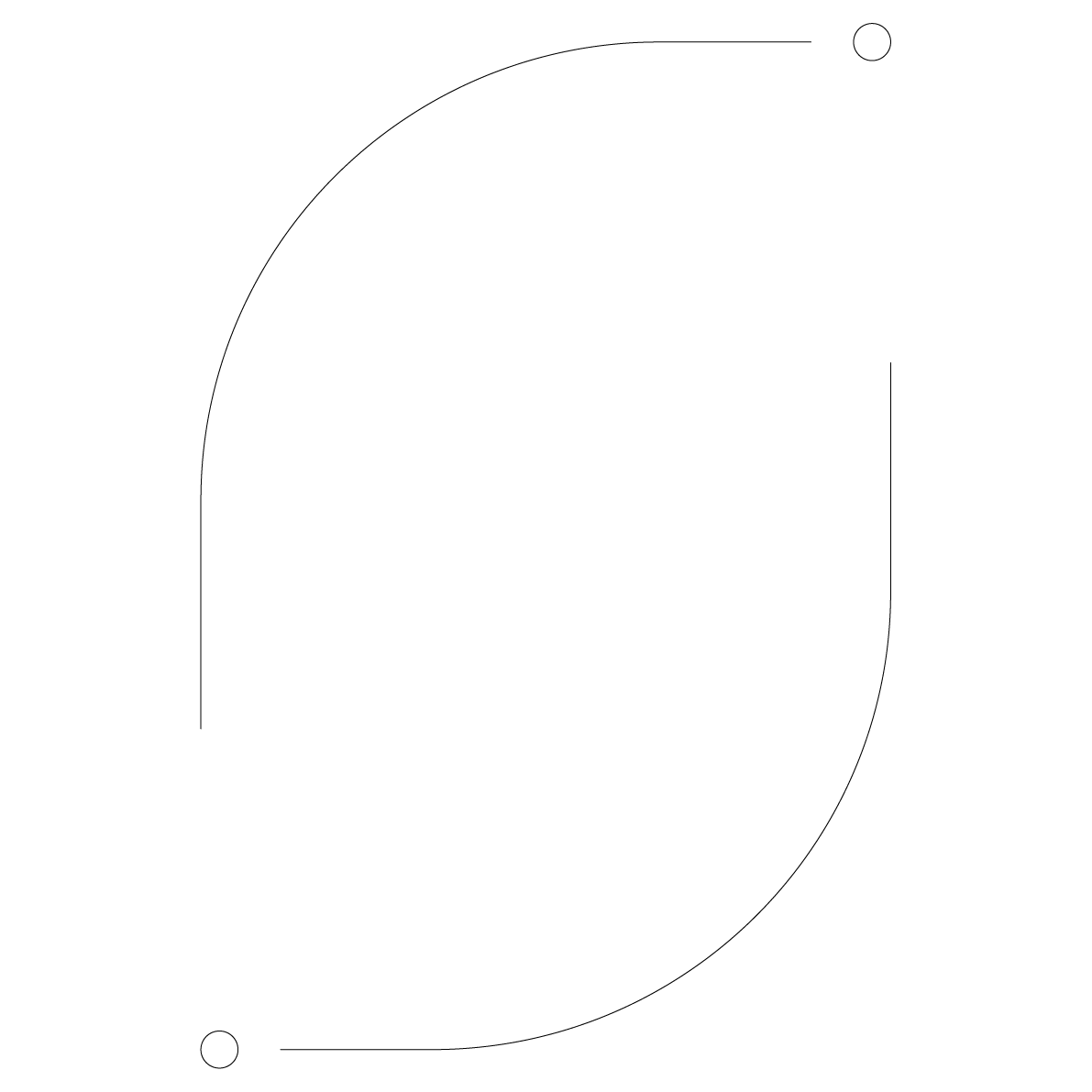Explores the effect of the ‘other’ (a stranger) upon my consciousness and sense of self as I navigate through public spaces Marc Augé (1992) would identify as ‘non-place’ (typically trains, buses and stations within this piece of work). Augé described non-places as places that separate people from their identity, relieving them from their usual determinants, becoming nothing more than what one does or experiences. I felt empowered by this release from my ‘usual determinants’ within the non-place and from that starting point wanted to pursue exploring what I could take from the other for my own sense of self. Through a practice of following strangers and recording my reactions to them, this research exposition identifies how my actions were a response to my consciousness of being identified as a young woman (and for a period, as a pregnant young woman) as well as a response to the desire to engage with the (appearance of) others. This work emphasises the fluid nature of self-identity by attempting to document a fleeting shift that was facilitated by allowing oneself to linger and follow a thought about a stranger that might otherwise be very fleeting and easily forgotten and unacknowledged. The body of work documents what I focused upon, identified with and how my consciousness shifted in relation to the other, the experience, and the actions I took in the non-place.
Began with gathering verbal descriptions from members of the public of specific pieces of their cherished clothing that no longer exist. The verbal descriptions were then used as the reference for making new pieces in collaboration with a garment technician, cobbler and jewellery designer that included coats, children’s shoes, jewellery and lingerie. The new pieces did not endeavour to replicate the original – as a dress historian might – but to make something new that referenced the memory embracing gaps, interpretation, and haziness. The combination of stories alongside the installation of the objects in a disused shop provided the viewer with an insight into each individual’s memory of their dressed self. This work explores frock consciousness in relation to the remembered self and affect not in the moment but in recollection.
Central to the investigation is the tenet that fashion is an embodied knowledge, commonly understood as an aesthetic knowledge, that is tacit in nature, as discussed by Joanne Entwistle (2000). Entwistle, drawing particularly upon the work of Michael Polanyi (1967) has written extensively about tacit aesthetic knowledge in fashion, the way that it circulates and travels. Due to the tacit nature, it is difficult to define exactly how dressing the body can affect a person’s consciousness, their experience of self and others. It is pertinent to note that, through her writing, Woolf also appears to have had contradictory thoughts, feelings and approaches to writing about how clothes effect bodies and consciousness:
Woolf describes a change in Orlando’s consciousness and relationship with herself and others affected by the clothing, not just her transitory sex:
Emphasis upon feeling, emotion and sensation is a priority in the work of sociologist Loïc Wacquant, whose pioneering work on ‘carnal sociology’, which is not of the body but from the body (2015), was influential in the methodology I adopted for this work. I also draw upon Bourdieu’s theory of habitus and field, which was defined in his works The Logic of Practice (1990) and The Field of Cultural Production (1993a). Bourdieu’s theory of field has been used as a framework that is useful for understanding spaces in which fashion is ‘played out’ (Entwistle and Rocamora 2006). Habitus is a cognitive space through which individual experiences inform how a person dresses and regards the dress of others; it is a space in which fashion knowledge is created, conceptualised and reflected upon.
This work documented the practice and process of fashioning my body in a way that I was unused to through what Wacquant (2015) might refer to as ‘enactive ethnography’, a performance of the phenomenon (of self-fashioning). I consciously engaged in a performance of fashioning my body using materials and instructions provided by other people: Sarah and Marie. The ‘stage’ for the performance was my day-to-day work environment, the School of Art Design and Fashion at Solent University, Southampton in the United Kingdom.
Within Woolf’s writing and my practice, there is an equal concern with the experience of gazing upon other dressed bodies and being affected by the way one’s own body is dressed. Sociologist Lucia Ruggerone describes ‘affect’ as “the feelings we experience about and in our clothes when we are dressed… transgressing the boundaries of semiotic, structural and sociological expression” (2016: 573). Frock consciousness is a temporal state, a moment in which our consciousness, our perception and perhaps our actions are affected by the clothes we dress our bodies in (Cohen 1999). I would extend the term ‘dress’ in this instance to include make-up, hairstyling, accessories, even scent (which is considered within my work Fashioning As and By Another). I am referring to the dressed or styled body in its entirety.
Caughie (1989) reads this contradiction in Orlando as presenting opposing views; the former based on the assumption that thought must be distinguished from rhetoric, the (wo)man from his/her attire; the latter that rhetoric makes the thought, that person and form are inseparable, the (wo)man must dress to advantage. Caughie contends that:
Whilst I was conscious of myself as a sight, I was simultaneously acting, gazing, documenting, analysing and responding; the work challenges the binary ‘men act and women appear’.
This research exposition reflects upon three projects made over thirteen years. The projects vary in form, format and reason for being. The common ground is that they all deal with the experience of the dressed body. The exposition uses Virginia Woolf’s concept of frock consciousness (1987: III. 12-13) as a framework for analysing how my work interrogates the experience of being-dressed-in-the-world.
Orlando curtseyed; she complied; she flattered the good man’s humours as she would not have done had his neat breeches been a woman’s skirts, and his braided coat a woman’s satin bodice (2000: 132).
The difference between the sexes is, happily, one of great profundity. Clothes are but a symbol of something hid deep beneath. It was a change in Orlando herself that dictated her choice of a woman’s dress and of a woman’s sex (2000: 132).
There is much to support the view that it is clothes that wear us and not we them; we may make them take the mould of arm or breast, but they mould our hearts, our brains our tongues to their liking. So, having now worn skirts for a considerable time, a certain change was visible in Orlando, which is to be found if the reader will look at page 111, even in her face (2000: 131-132).
I should like to investigate the party consciousness, the frock consciousness &c. The fashion world at the Becks - Mrs Garland was there superintending a display - is certainly one; where people secrete an envelope which connects them & protects them from others, like myself, who are outside the envelope, foreign bodies. These states are very difficult (obviously I grope for words) but I'm always coming back to it (1987: III. 12-13).
The surveyor of woman in herself is male: the surveyed female. Thus she turns herself into an object and most particularly an object of vision: a sight (Berger 1972: 42).
Lisa Cohen in her essay “Frock Consciousness”: Virginia Woolf, the Open Secret, and the Language of Fashion, contends that ‘frock consciousness’, quite simply, has to do with the state or activity of being clothed (1999: 154). Cohen eloquently justifies what at first appears to be an oxymoron, the first word ‘a winsome sheath,’ the second referring to the mind, reminding us that:
This playful knowingness is a device I use in my practice; sometimes acted out as compliance or flattery, sometimes gentle teasing or questioning through my actions and the visual work. I am conscious of my dressed body under the gaze of others, both Eroding the Otherness and Fashioning As and By Another actively play with my experience of being in the gaze but the work is not submissive to the gaze. This knowingness determines both my actions and my relationship with myself.
Woolf’s diaries, letters and fiction consistently alight upon her preoccupation with clothing and its relationship with the person or character, sometimes herself. It is clear that Woolf uses clothing as a device to understand and convey personality, status, identity, gender and feeling. There are examples of this throughout her fiction and non-fiction, particularly Mrs Dalloway (first published in 1925), Orlando (first published in 1928), her short story The New Dress (first published in 1927) and her diaries written mainly in the 1920s. Rosie Findlay (2016), drawing upon the phenomenological position of Maurice Merleau-Ponty (2014) describes how clothing intertwines with imagination, self-perception and embodied experience to co-fabricate a sense of being-in-the-world. Findlay’s articulation chimes with the ideas Woolf was grappling with trying to define this notion of the ‘frock consciousness’ affect, that clothing can have upon a person’s experience of the world when combined with their imagination. Stories such as The New Dress (2015) pursue the idea of clothing being an ‘affect’ shaping the character Mabel’s perception of herself in relation to space and place (Cohen 1999). In The New Dress, ‘frock consciousness’ is heightened through an intense spectrum of emotions from bliss to feeling despised. The function of this research exposition is to use the lens of ‘frock consciousness’ to analyse my practice. Therefore, there will not be an in-depth critique of Woolf’s work within the exposition, though I will draw upon examples.
The man has his hand free to seize his sword, the woman must use hers to keep the satins from slipping from her shoulders. The man looks the world full in the face, as if it were made for his uses and fashioned for his liking. The woman takes a sidelong glance at it, full of subtlety, even of suspicion. Had they both worn the same clothes it is possible their outlook might have been the same (2000: 132).
Clothes both constitute a border and suggest it’s permeability – they lie between what we understand to be public space (the social world at large), and what we consider private (the body of an individual) (Cohen 1999: 150).














